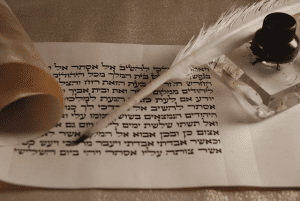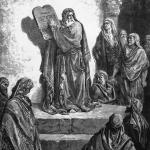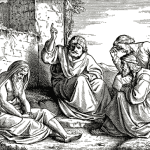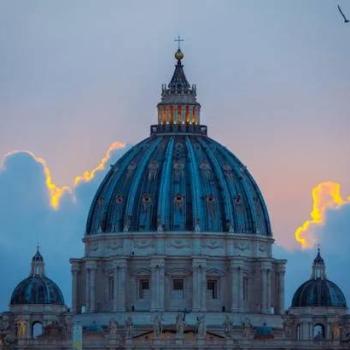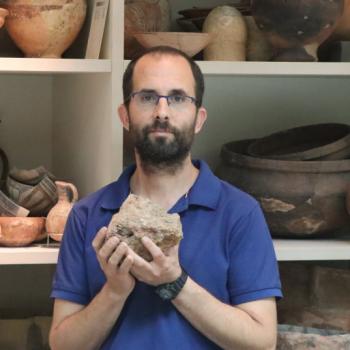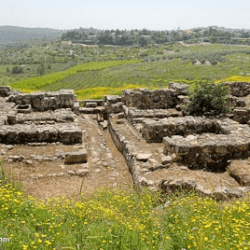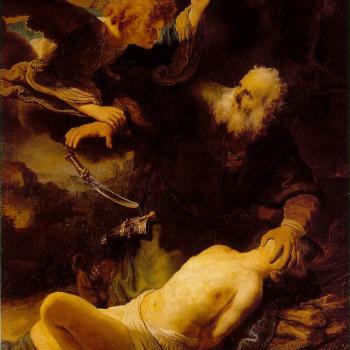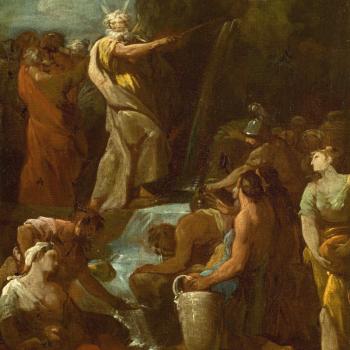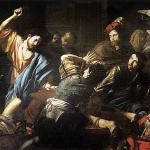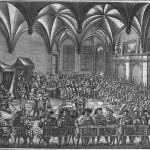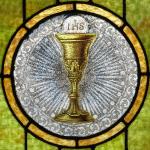I will be drawing heavily from an article written by the eminent Bible scholar and historian Edwin M. Yamauchi, entitled, “The archaeological background of Nehemiah.” (1)
Nehemiah was the “cupbearer” (Neh. 1:1, 11) to the Persian king Artaxerxes I (r. 465-425 B.C.) (2)
Nehemiah 2:1 (RSV) In the month of Nisan, in the twentieth year of King Artaxerxes, when wine was before him, I took up the wine and gave it to the king. . . .
Nehemiah 5:14 Moreover from the time that I was appointed to be their governor in the land of Judah, from the twentieth year to the thirty-second year of Artaxerxes the king, twelve years, neither I nor my brethren ate the food allowance of the governor.
The date, therefore, of the first meeting of Nehemiah with King Artaxerxes was 445 B.C., and his service as Governor of Judah extended down to 433 B.C. The Bible intersects with history, as proven by archaeology and historiography. And it is completely accurate when it does so. As another example, Sanballat (the Horonite), an adversary of Nehemiah, is mentioned ten times in the book of Nehemiah (2:10, 19; 4:1, 7; 6:1-2, 5, 12, 14; 13:28). Yamauchi writes, “An Elephantine papyrus, dated to 407, mentions the sons [Delaiah and Shelemiah] of Sanballat, the governor of Samaria.” (3)
Ezra and Nehemiah are present together in Nehemiah 8:9 for the public reading of the Law and in Nehemiah 12:26-27, 36 at the dedication of the new wall of Jerusalem. Yamauchi analyzes the office of “cupbearer”,
It occurs twelve times in the Old Testament in the sense of “cupbearer.” . . . Classical sources give detailed descriptions of cupbearers at the Persian court. Xenophon (4) describes one of the main duties as follows: “Now, it is a well known fact that the cupbearers, when they proffer the cup, draw off some of it with the ladle, pour it into their left hand. and swallow it down – so that, if they should put poison in, they may not profit by it.” (5)
Nehemiah refers to the “former governors who were before me” (5:15). Some thought that Judah didn’t have governors, but that this referred to governors of Samaria. But in 1974, some seventy bullae (clay seal impressions) emerged, one of which bore “the inscription YHD, which was the Persian designation of the province of Judah as already known from other seal impressions and coins.” (6) Israeli archaeologist Nahman Avigad (1905-1992) dated them to the sixth and early fifth century B.C. (7), and proposed a list of eight governors of Judah:
1) Sheshbazzar (Ezra 1:8; 5:14) [538 B.C.]
2) Zerubbabel (Haggai 1:1, 14) [515 B.C.]
3) Elnathan (bulla and seal) [late sixth century]
4) Yeho’zer (jar impression) [early fifth century]
5) Ahzai (jar impression) [early fifth century]
6) Nehemiah (Neh. 5:14; 12:26) [445-432 B.C.]
7) Bagohi (Bagoas) (Elephantine papyrus) [407 B.C.]
8) Yehezqiyah (coins) [330 B.C.] (8)
In 1962 fourth-century B.C. papyri were discovered in a cave in Wadi ed-Daliyeh, near of Jericho. It provided verification of a succession of governors of Samaria, including Sanballat I, born c. 485 B.C. (9)
Geshem (“the Arab”), another enemy of Nehemiah, is cited at 2:19 and 6:1-2, 6. Yamauchi provides extrabiblical verification (10):
A Lihyanite inscription from Dedan (modern Al-Ula) in Northwest Arabia reads, “Jasm son of Sahr and Abd, governor of Dedan.” This Jasm is identified by Winnett and Albright with the biblical Geshem. (11)
In 1947 several silver vessels, some with Aramaic inscriptions dating to the late fifth century B.C., were discovered at Tell el-Maskhuta near Ismaila by the Suez Canal. One inscription bore the name, “Qaynu the son of Gashmu, the king of Qedar.” As this also seems to refer to the biblical Geshem, it may be concluded that the latter was in charge of a powerful north Arabian confederacy which controlled vast areas from northeast Egypt to northern Arabia and southern Palestine. Geshem may have been opposed to Nehemiah’s development of an independent kingdom because he feared that it might interfere with his lucrative trade in myrrh and frankincense. (12)
Tobiah “the servant, the Ammonite” (2:19) — another enemy — is mentioned 15 times in the book. Benjamin Mazar (1906-1995), eminent Israeli historian and archaeologist, constructed a genealogical table of the Tobiad family, from various evidences (13). It includes “Tobiah, Ammonite official”: flourished 440 B.C. Ammon was in current-day Jordan, near the present capital of Amman. Yamauchi adds:
Tobiah was probably the governor of Ammon under the Persians. A later Tobiah [flourished 270 B.C.] . . . is explicitly called “the governor of Ammon.” (14)
Nehemiah 3:8 . . . they restored Jerusalem as far as the Broad Wall.
Yamauchi continues:
In 1970-71 Avigad, excavating in the Jewish Quarter of Jerusalem, discovered to the west of the Temple area a seven-meter thick wall and cleared it for some forty meters. He identifies this with “the broad wall” . . . repaired by Nehemiah (Neh. 3:8). The phrase is usually understood as a thick wall, but Grafman interprets it to mean a long. extensive wall. (15) The wall is dated to the early seventh century and was probably built by Hezekiah (2 Chron. 32:5). (16)
Nehemiah 3:26-27 and the temple servants living on Ophel repaired to a point opposite the Water Gate on the east and the projecting tower. After him the Teko’ites repaired another section opposite the great projecting tower as far as the wall of Ophel.
Irish archaeologist R. A. Stewart Macalister (1870-1950) discovered in excavations in 1923-1925 on the crest of the Ophel Hill, near the temple mount in Jerusalem, an ancient wall, ramp, and great tower. He mistakenly dated it to the time of David and Solomon. Fifty years later, Benjamin Mazar thought that the tower “may possibly be identified with the ‘great projecting tower’ described by Nehemiah (3:26-27).” (17) Just three years later, in 1978, excavations at the base of this tower revealed “for the first time in Jerusalem a Persian-period ceramic layer within clear stratigraphical context – solid archaeological evidence for that resettlement of the Babylonian exiles in the City of David.” (18)
Nehemiah 2:17 . . . Come, let us build the wall of Jerusalem . . .
Nehemiah 6:15 So the wall was finished on the twenty-fifth day of the month Elul, in fifty-two days.
Further strong evidence has come to light regarding the walls of Jerusalem that were built (not merely repaired) by Nehemiah in the fifth century — the phrase “the wall” appears 27 times in the book — some 130 or more years after the city was destroyed by the Babylonians:
Situated in the City of David, at the upper northern end of the Stepped Stone Structure, the Northern Tower was a poorly constructed fortified structure. It had the remains of a mikveh (ritual purification bath) on top. The Northern Tower was largely unearthed in the 1920s. Until 2007, archaeologists, including Dr. [Eilat] Mazar, generally assumed the tower dated to the Hasmonean period (second century b.c.e.). . . .
[T]he absence of certain material helped Dr. Mazar date the tower and associated wall. Yehud seal impressions are very common during Persian period Judah. Yehud was what Judah was called during Persian rule. During Yigal Shiloh’s excavations in the City of David in the 1980s, many Yehud bullae had been found, all of which dated to the second half of the fifth century b.c.e. or later. But here, in this almost five-foot-thick Persian layer beneath the Northern Tower, Dr. Mazar didn’t find a single one. That meant this material must have been in place before the middle of the fifth century b.c.e.
Using pottery typology and the dog burials, Dr. Mazar concluded that the Northern Tower and wall were constructed around 450 b.c.e. . . .
The tower and wall were not masterpieces of engineering. Their construction quality showed that they had been built hastily—just as Nehemiah recorded. Nehemiah 3 describes the wall’s construction in detail. It specifies various lengths of walls, towers and gates being rebuilt, along with names of the workmen. . . .
Bible skeptics pointed to the book of Nehemiah and its detailed description of the wall and asked why none of its remains had ever been discovered. Since 2007, they can no longer ask this question. . . .
Others have criticized Dr. Mazar for using the Bible. These critics say Mazar cannot be trusted because she has a Bible bias. The fact is, prior to this excavation, Mazar—like many others—believed the Northern Tower was Hasmonean. She was not looking for this discovery, nor searching for evidence proving the Bible true. When the science pointed to this discovery being Nehemiah’s wall, she was as surprised as everyone else.
Dr. Mazar did not rush to conclude she had discovered Nehemiah’s wall. Rather, she diligently and responsibly followed the science, and objectively compared it to the biblical record. (19)
Lastly, a manuscript of Nehemiah among the Dead Sea Scrolls was found in 2012. Up until recently, only the books of Nehemiah and Esther, out of all of the books of the Hebrew Bible, were missing from the scrolls:
Norwegian scroll scholar Torleif Elgvin of Evangelical Lutheran University College in Oslo, Norway, announced that he and colleague Esther Eshel of Bar-Ilan University will be publishing a collection of more than two dozen previously unknown scroll fragments, including the first known fragment of Nehemiah. The scrolls in the new book come from Qumran Cave 4, Bar-Kokhba caves and Wadi ed-Daliyeh. (20)
FOOTNOTES
1) Edwin M. Yamauchi, “The archaeological background of Nehemiah,” Bibliotheca Sacra 137 (Oct.-Dec. 1980), 291-309. Dr. Yamauchi (b. 1937) is Professor Emeritus of History at Miami University, (Oxford, Ohio), where he taught from 1969 until 2005. He studied Mandaean Gnostic texts as part of his Ph.D. dissertation at Brandeis University, and learned 22 different languages, including Hebrew, Aramaic, Akkadian, Ugaritic, Arabic, Syriac, and Coptic. His areas of expertise include: Ancient History, Old Testament, New Testament, Early Church History, Gnosticism, and Biblical Archaeology. Dr. Yamauchi has published 80 essays in 37 scholarly journals, and numerous books and book chapters, including Persia and the Bible (Grand Rapids, Michigan: Baker Academic, 1997).
2) [Artaxerxes I info.]
3) Yamauchi, 291. See James B. Pritchard, ed., Ancient Near Eastern Texts Relating to the Old Testament, 3d ed. (Princeton, New Jersey: Princeton University Press. 1969), 491-92 (Cowley, no. 30). On the Elephantine papyri, see Bezalel Porten, Archives From Elephantine (Berkeley: University of California Press, 1968); Jews of Elephantine and Arameans of Syene, translated by Bezalel Porten (Jerusalem: Academon, 1976); Bezalel Porten, “Aramaic Papyri and Parchments: A New Look,” Biblical Archaeologist 42 (1979): 74-104.
4) Xenophon, Cyropaedia 1.3.9.
5) Yamauchi, 296.
6) Yamauchi, 298.
7) Nahman Avigad, Bullae and Seals from a Post-Exilic Judean Archive (Jerusalem: Hebrew University Press, 1976).
8) Avigad, ibid., Yamauchi, 299.
9) Yamauchi, 300. See many further bibliographic source materials in his footnotes 53 and 54 on page 308.
10) Yamauchi, 302.
11) F. V. Winnett, A Study of the Lihvanite and Thamudic Inscriptions (Toronto: University of Toronto Press, 1937), 50-51; W1lliam F. Albright, “Dedan,” Geschichte und Altes Testament (Tubingen: J. C. B. Mohr, 1943), 1-12.
12) Frank M. Cross, “Geshem the Arabian, Enemy of Nehemiah,” Biblical Archaeologist 18 (1955): 46-47; I. Rabinowitz, “Aramaic Inscriptions of the Fifth Century BCE,” Journal of Near Eastern Studies 15 (1956): 1-9; W. J. Dumbrell, “The Tell el-Maskhuta Bowls and the ‘Kingdom’ of Qedar in the Persian Period,” Bulletin of the American Schools of Oriental Research 203 (1971): 33-44; A. K. Irvine, “The Arabs and Ethiopians,” Peoples of Old Testament Times, ed. Donald J. Wiseman (Oxford: Clarendon Press, 1973), 287-311.
13) Benjamin Mazar, “The Tobiads,” Israel Exploration Journal 7 (1957): 137-45; 229-38.
14) Yamauchi, 301.
15) R. Grafman, “Nehemiah’s ‘Broad Wall,” Israel Exploration Journal 24 (1974): 50-51.
16) Yamauchi, 303.
17) Benjamin Mazar, The Mountain of the Lord (Garden City, New York: Doubleday & Co., 1975), 198.
18) Yigal Shiloh, “City of David: Excavation 1978,” Biblical Archaeologist 42 (1979): 168.
19) Christopher Eames, “Discovered: Nehemiah’s Wall,” Armstrong Institute of Biblical Archaeology, October 31, 2019. Sadly, Eilat Mazar, granddaughter of Benjamin Mazar, died on May 25, 2021. But she left a legacy of a number of dramatic archaeological discoveries in Jerusalem. For more fascinating information and photographs of the various walls of Jerusalem, built at different times, see Arthur Chrysler, “Nehemiah’s Wall,” Biblical Archaeology Truth.
20) “Book of Nehemiah Found Among the Scrolls,” Bible History Daily, May 15, 2012.
***
Practical Matters: Perhaps some of my 4,200+ free online articles (the most comprehensive “one-stop” Catholic apologetics site) or fifty-one books have helped you (by God’s grace) to decide to become Catholic or to return to the Church, or better understand some doctrines and why we believe them.
Or you may believe my work is worthy to support for the purpose of apologetics and evangelism in general. If so, please seriously consider a much-needed financial contribution. I’m always in need of more funds: especially monthly support. “The laborer is worthy of his wages” (1 Tim 5:18, NKJV). 1 December 2021 was my 20th anniversary as a full-time Catholic apologist, and February 2022 marked the 25th anniversary of my blog.
PayPal donations are the easiest: just send to my email address: apologistdave@gmail.com. You’ll see the term “Catholic Used Book Service”, which is my old side-business. To learn about the different methods of contributing, including 100% tax deduction, etc., see my page: About Catholic Apologist Dave Armstrong / Donation Information. Thanks a million from the bottom of my heart!
***
Photo credit: [public domain / rawpixel]
***
Summary: I present several evidences from secular historical accounts & archaeology that back up the historical trustworthiness of the book of Nehemiah from the 5th c. B.C.


